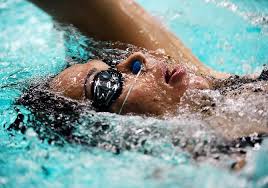Swimming Training for Various Competitive Swims
Before you begin swimming training, you need to decide what your end goal is. Different techniques offer different benefits. For example, a person who wants to swim long distances would need to focus on a training vastly different from someone interested in pool sprinting. You’d even need to take a different training approach if you planned on swimming a triathlon when compared to open water swims. While there are benefits of swimming with any training type, it is still essential to hone in on what you want to accomplish.
Take for example the individual medley. Here, you could complete four strokes in a specific order. They are the butterfly, backstroke, breaststroke and finally the freestyle. These races last anywhere from 100 yards to 400 meters and are usually done in short course pools. Your training for this should focus on the individual movements of each stroke and improving your time in the water.
Open Water Swimming Training
Open water races are done in a large body of water and are marked by buoys. These long courses run a mile or more. Typically, swimmers will use a freestyle swim. Although, the breaststroke is sometimes more appropriate for shorter races. If the water is choppy and breathing is difficult, the backstroke might be used. In these cases, a varied swimming training designed for endurance is often a great choice for open water swimming.

Relays are a competitive race that gives you the benefits of swimming, but requires shorter bursts. Competitors swim equal distances in the pool and a new swimmer takes over when they reach a goal. In some, each team member participates using a different stroke. Others may be simply freestyle. Most races arrange from 200 – 400 meters, while the freestyle swims are often longer, going up to 800 meters. An open water relay might also be done with team members being guided by boats to their destinations as they wait for their team member to arrive in the water.
Swimming training is often best done with an intuitive, meditative focus on a specific technique in pace sets. You just choose a pace and break it down into intervals and number of strokes. As you do this, you are able to achieve a steady pace that gives you the full benefits of swimming.
Take for example you want to do a 30 minute swim that takes you 1650 yards. In this case, you would divide 1650 16.5x100s and use 1:49. You would end up with a stroke for 25 – 27 seconds. This gives you the count to follow so you are able to achieve the pace you want to accomplish. When you decide to boost your speed, there are three things to work on.
- Reduce the resistance you have in the water.
- Build strong muscles and feel for the water.
- Improve your lactate threshold levels when swimming.
You can accomplish this with boosting fitness levels and find that sweet spot when you’re swimming. It’s a balance of technique and fitness training. But if you work at it, you should end up successful. Finally, once you manage to boost your lactate levels, you should begin to see an improvement in your overall speed.
All of this does take time, so make sure you work on it. With a little swimming training, you’ll begin to see results. Before you know it, you’ll have all the benefits of swimming and start to see a difference in your performance results.
Today’s Daily Swimming Workout
Warm-Up: 500 straight your choice of swimming strokes
Kick with Swim Fins: 5 X 100 two 100’s backstroke kick
5 X 200 as 50 butterfly, 150 freestyle
Pull with hand paddles: 5 X 100 two 100’s breaststroke
5 X 200 as 75 Individual Medley, 125 freestyle
Cool-down: 300 tai chi style swimming
Total: 3800 meters or yards depending on the length of your pool
back to the top of swimming training page








